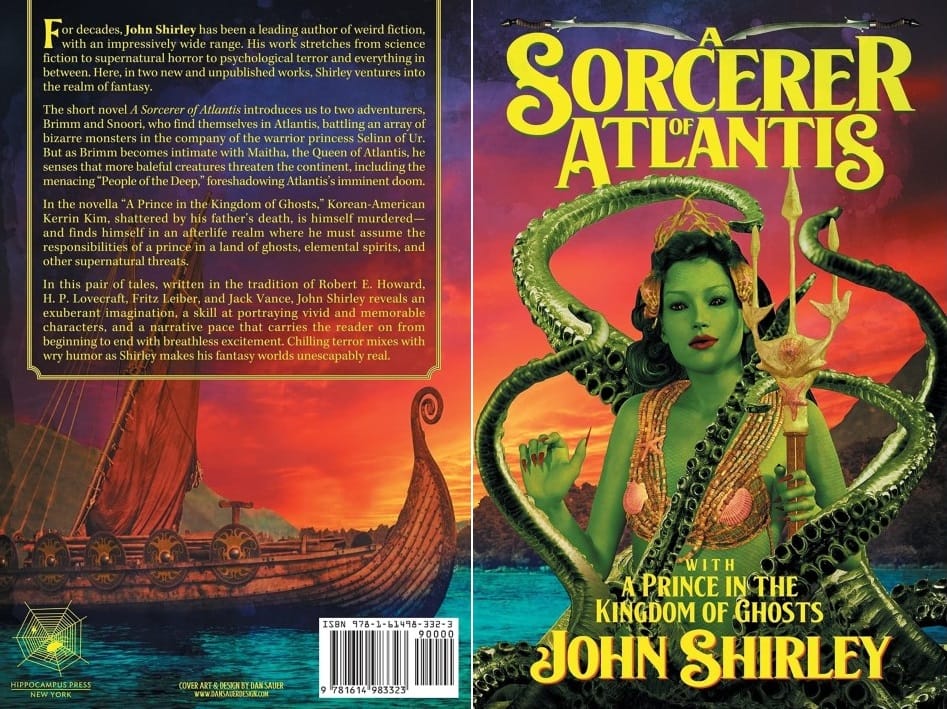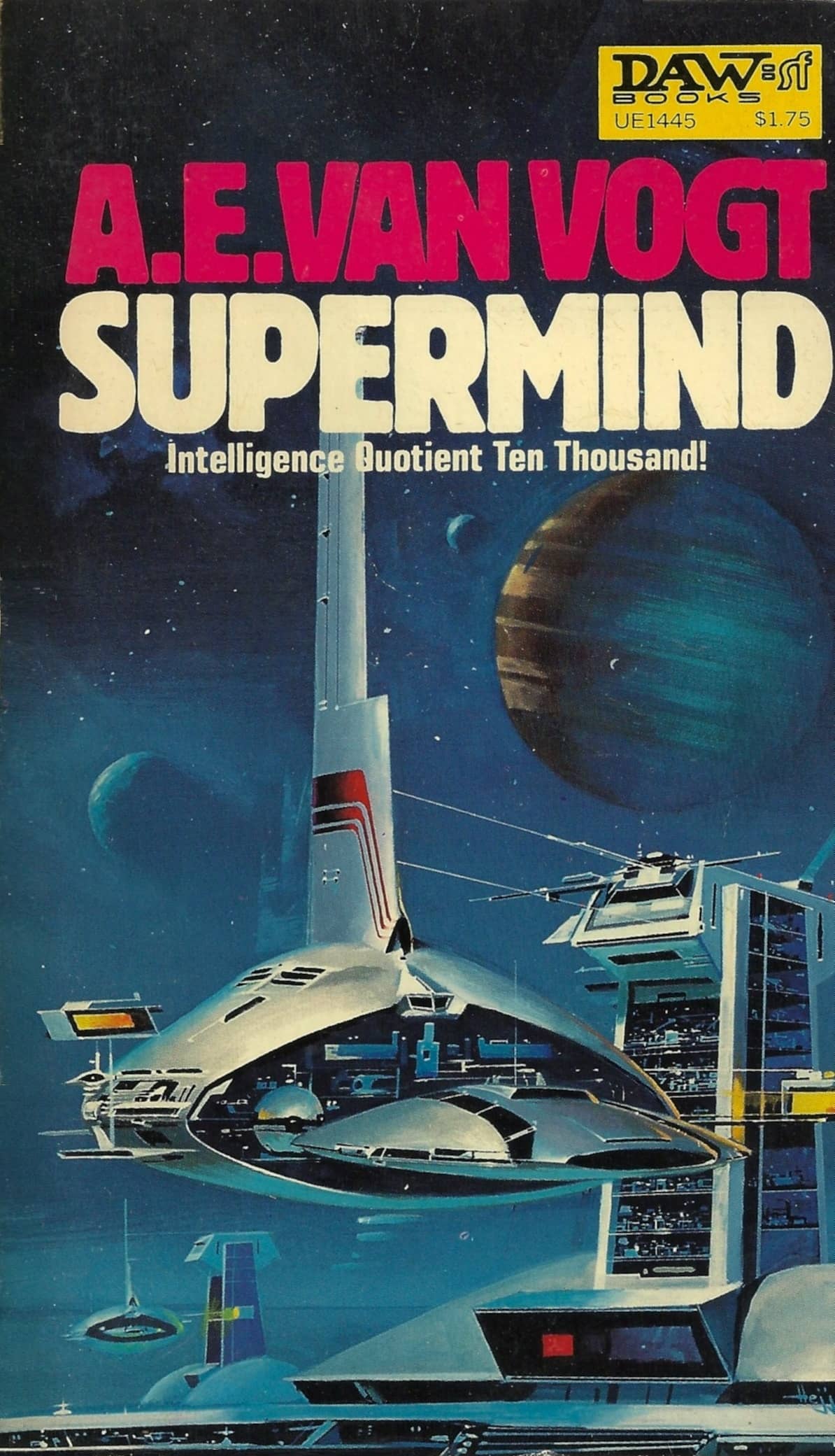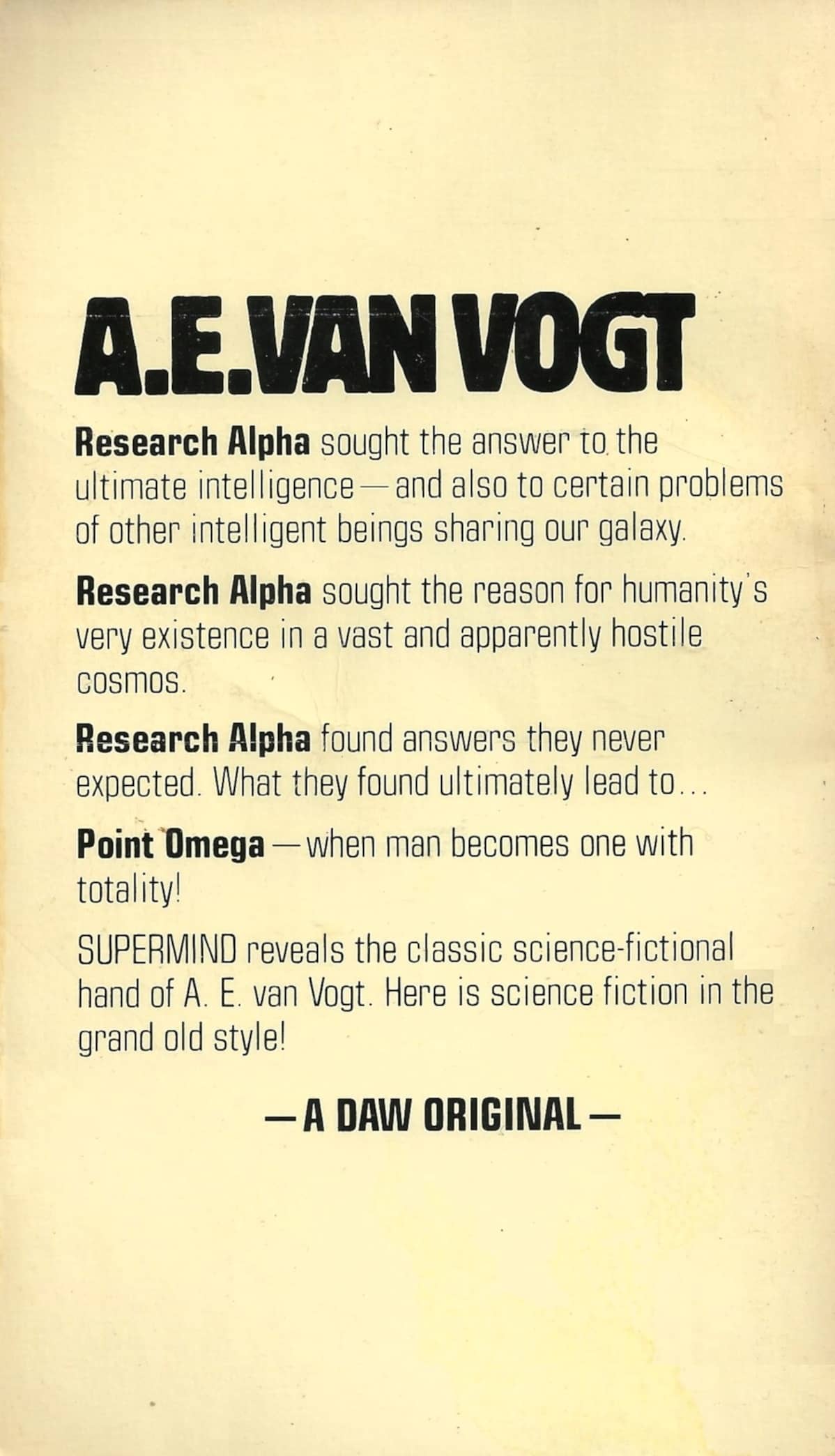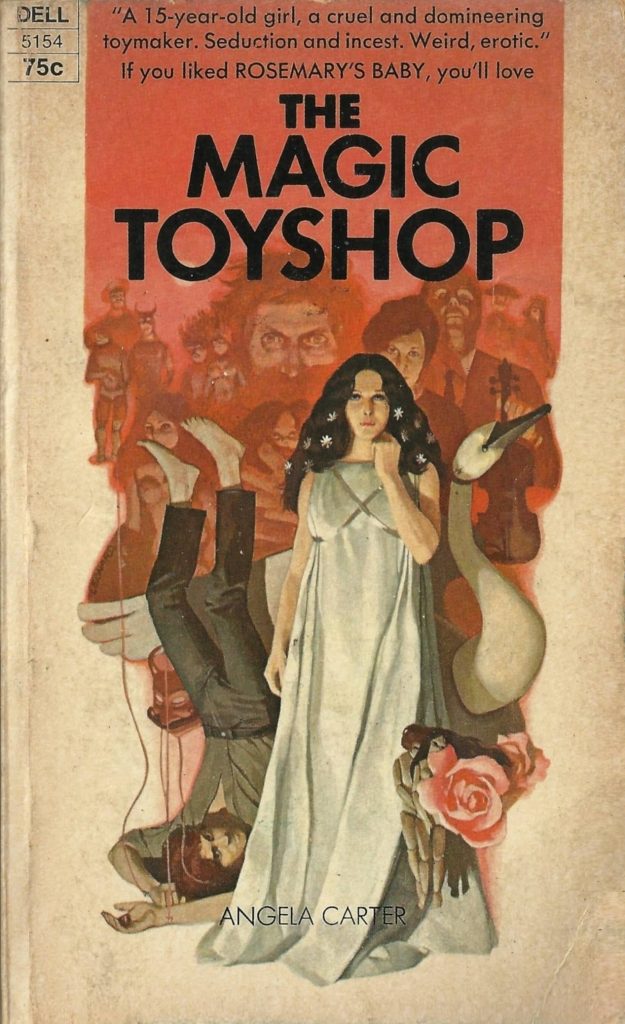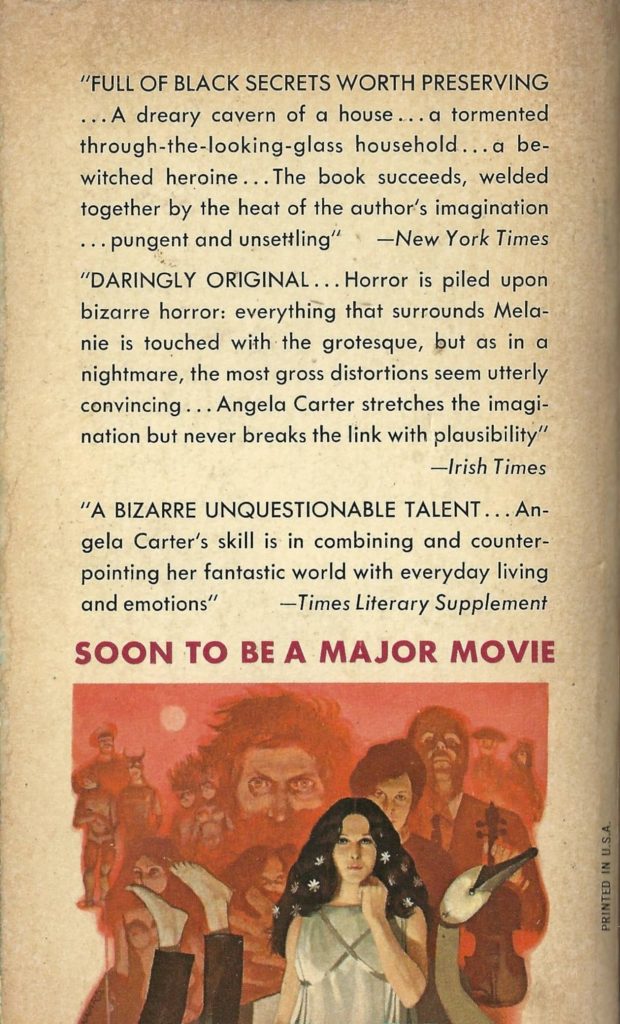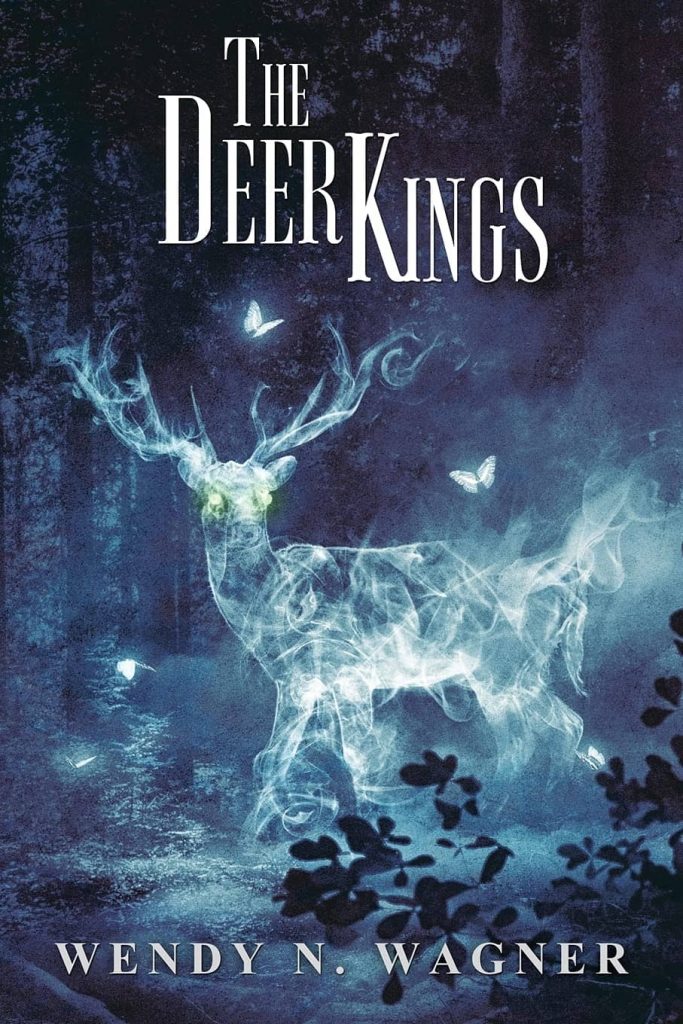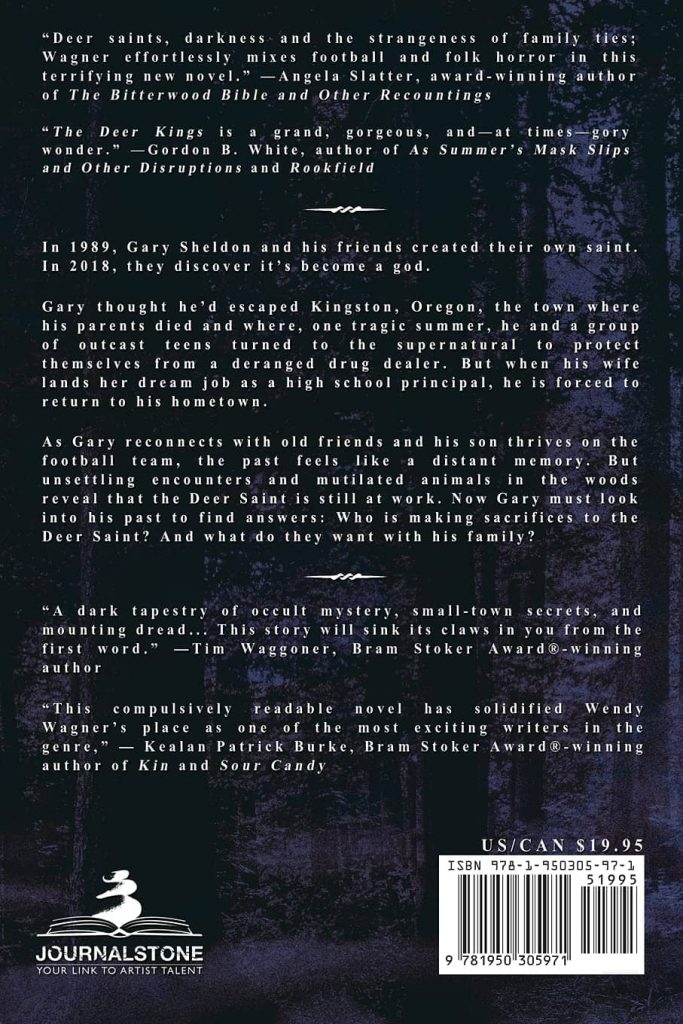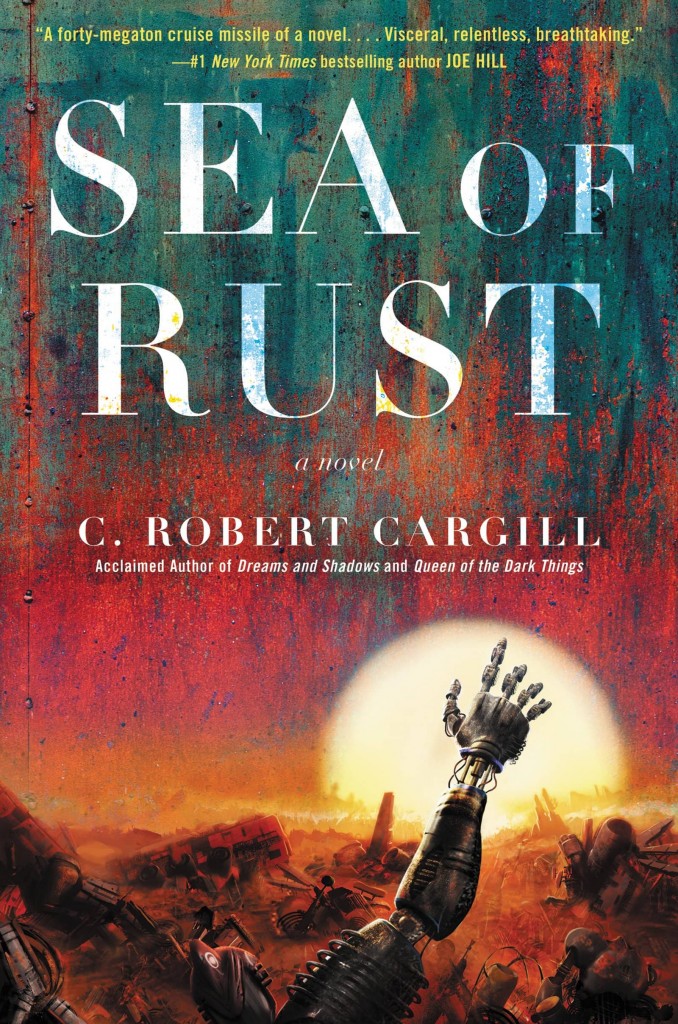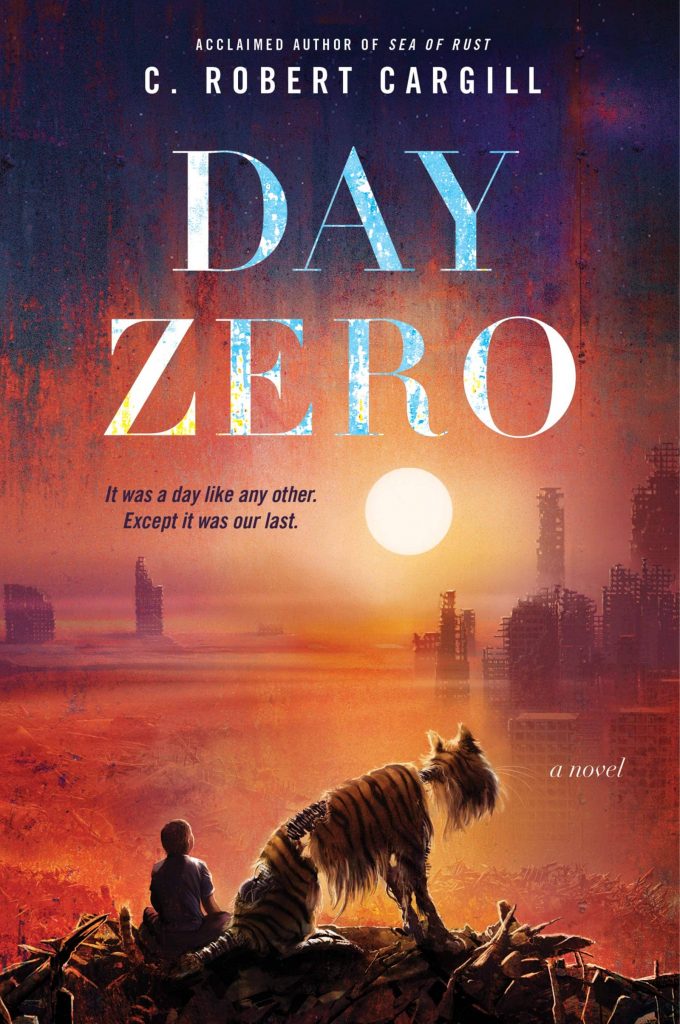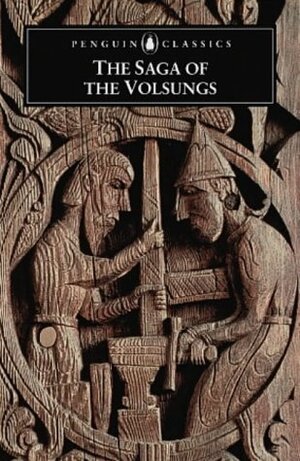Frontguard Sword and Sorcery: John Shirley’s A Sorcerer of Atlantis
A Sorcerer of Atlantis (Hippocampus Press, 2021). Cover by Daniel V. Sauer
A Sorcerer of Atlantis: With A Prince in the Kingdom of Ghosts
John Shirley’s A Sorcerer of Atlantis: With A Prince in the Kingdom of Ghosts, published by Hippocampus Press (2021), includes two autonomous works: the novel A Sorcerer of Atlantis, which relates the hack-and-slash and demon-haunted adventures of Brimm the Half-Savant and Snoori, his mischievous, short-statured, mustachioed sidekick; and the novella, “A Prince in the Kingdom of Ghosts,” a haunting gateway fantasy that evokes the trans-dimensional tales of Roger Zelazny’s Chronicles of Amber and the psycho-cartographic tradition of Dante’s Inferno.
Although bound together, both works are distinct, excellent reading experiences. Nevertheless, both works might be equally labeled “sword and sorcery,” the pulp fantasy literary tradition of Robert E. Howard. Indeed, one of the joys of this book is how it showcases the dramatic range of that pulp tradition as it evolved after Howard. Put simply, Shirley’s book is no mere pastiche, the re-hashing of a passé sword and sorcery formula, although A Sorcerer of Atlantis does engage Weird Tales and Henry Kuttner nostalgia. Instead, Shirley’s unique work reminds us that the purview of sword and sorcery is a wide, unfolding, and dynamic literary conversation that is heating up today.
…
